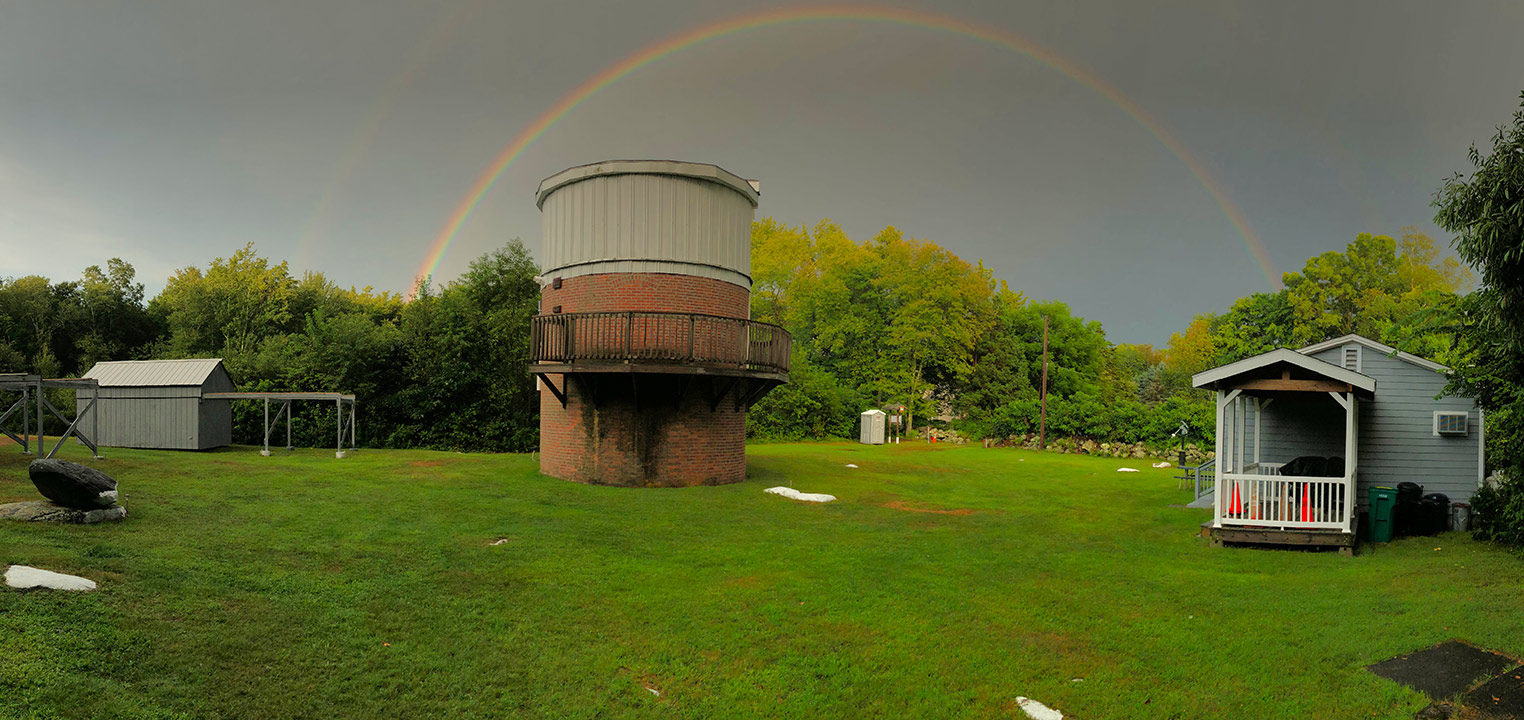
Solar Spectrum in the Sky
September 2019 :
I hate thunderstorms. If I could, I’d throw myself under my bed until it was over. This isn’t a leftover from childhood; it came at me as a teenager, and haunts me til this day. I still count the Mississippis just to make sure it isn’t too close, and sigh with relief when it winds down.
However, occasionally, as the storm ends and we have just a few small raindrops left, the Sun will appear. Then, as soon as it is visible, I revert back to a kindergarten planetarium show I used to do in New York, pre total video projections, when it was myself in the middle of the room, with a microphone and a button, and many of the characters from Sesame Street projected as slides (remember them?). There, after the technicians finished spraying the audience with water from squirt guns, my button would project a rainbow, with Big Bird suddenly directing his friends and everybody in the room to look at it with wonder, after which Big Bird would tell us all how to find it: “Turn your back to the Sun, and you may see a rainbow!”
It isn’t really that easy, as rainbows don’t occur with each bout of rain: It only happens when the Sun reappears before the rain stops, as we need the raindrops to create the magnificent colors. We need the water droplets to reflect, refract, and disperse the light, making the beautiful rainbow arc, consisting of the primary and secondary colors, always in order, from red, orange, yellow, green, blue and violet. Occasionally, the hue indigo is added to make seven, courtesy of Sir Isaac Newton, who believed the number seven was necessary in Nature. To recall the order of color, you might remember the mnemonic ROY G BIV, which I learned as a child, courtesy Finnie, the Office Goldfish, in Jack and Jill Magazine.
Although we normally see the arc of color along the horizon, a rainbow can be a full circle. I was fortunate to see this one time while flying out of Detroit. As the plane rose, so did the rainbow, and the woman beside me – a stranger, of course – was pulled to the window to see this. And, yes, she was quite amazed – at least she said she was.
In addition, if you look carefully, you might often see the secondary rainbow, which is much dimmer than the primary one, as it is spread over a greater part of the sky. It is the result of a double reflection of sunlight within the water droplets. That is also why the colors are reversed, with violet on the top and red on the bottom.
Some of us were fortunate to observe both a primary and secondary rainbow during the last major thunderstorm at Seagrave Observatory. As ever, the sight was magnificent! Seeing a rainbow has to be one of Nature’s most incredible visions. At times, it almost makes undergoing a truly scary rainfall worthwhile. In the words of Big Bird and his friends, “Wow! It’s beautiful!”



